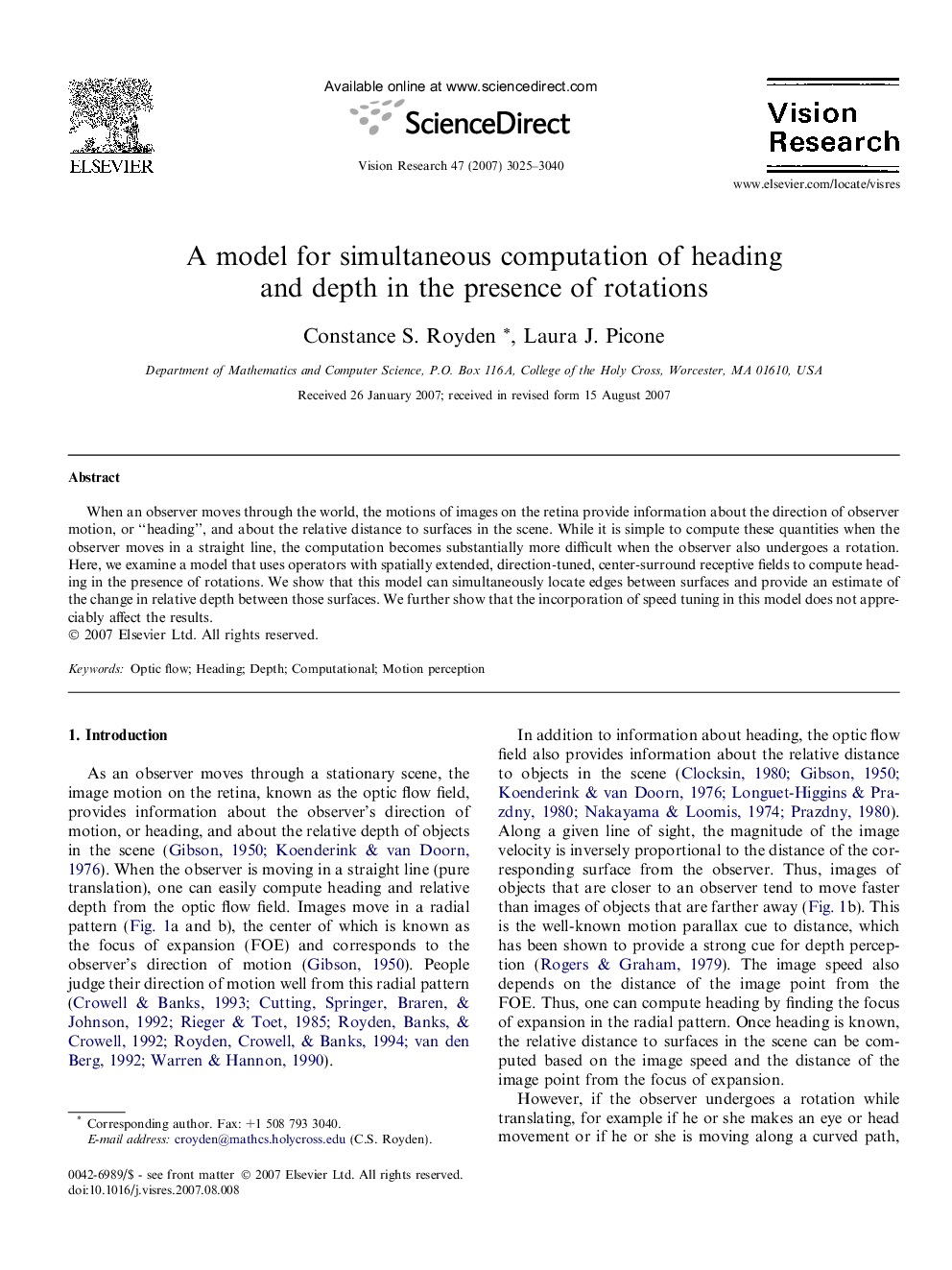| Article ID | Journal | Published Year | Pages | File Type |
|---|---|---|---|---|
| 4035362 | Vision Research | 2007 | 16 Pages |
When an observer moves through the world, the motions of images on the retina provide information about the direction of observer motion, or “heading”, and about the relative distance to surfaces in the scene. While it is simple to compute these quantities when the observer moves in a straight line, the computation becomes substantially more difficult when the observer also undergoes a rotation. Here, we examine a model that uses operators with spatially extended, direction-tuned, center-surround receptive fields to compute heading in the presence of rotations. We show that this model can simultaneously locate edges between surfaces and provide an estimate of the change in relative depth between those surfaces. We further show that the incorporation of speed tuning in this model does not appreciably affect the results.
